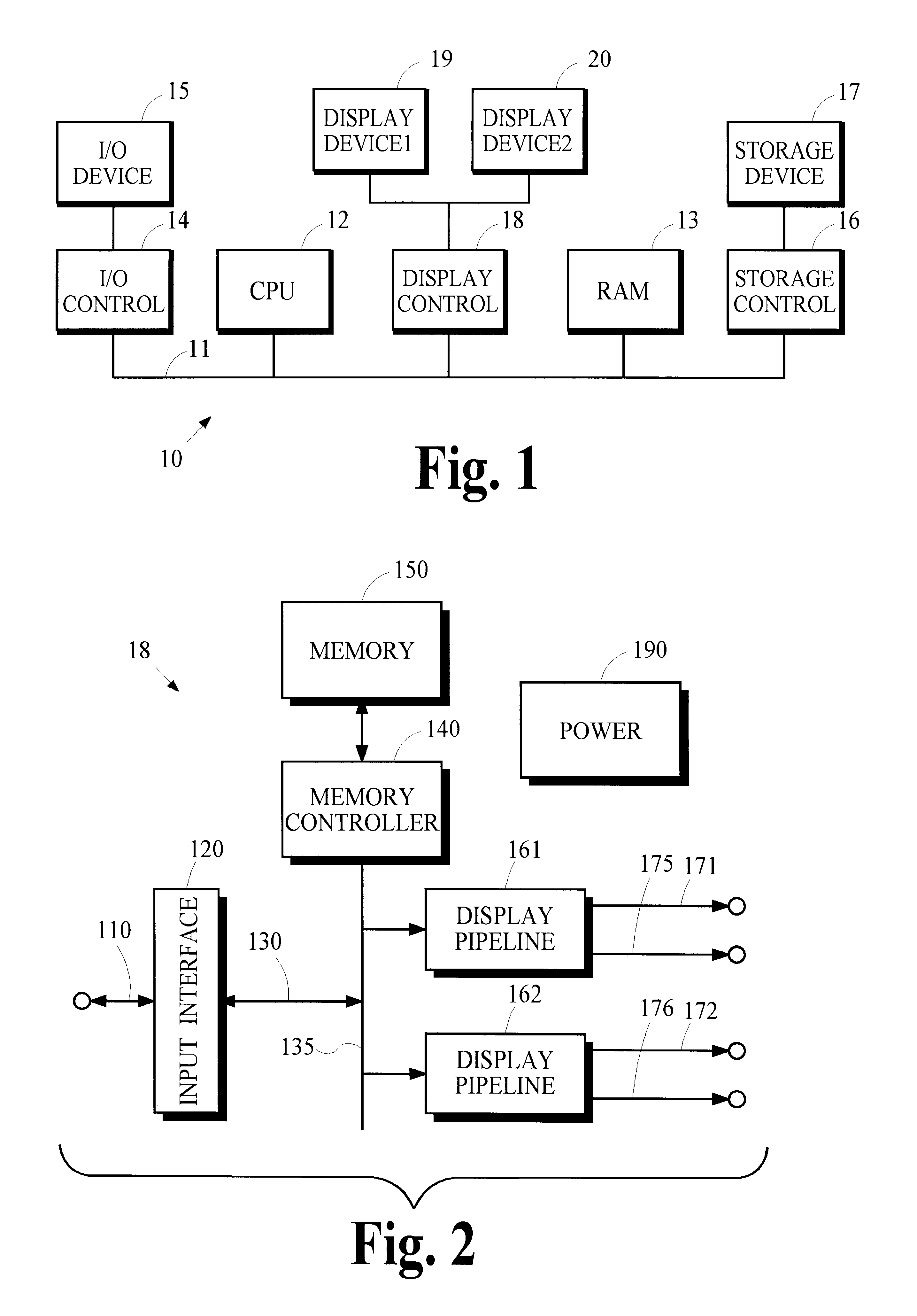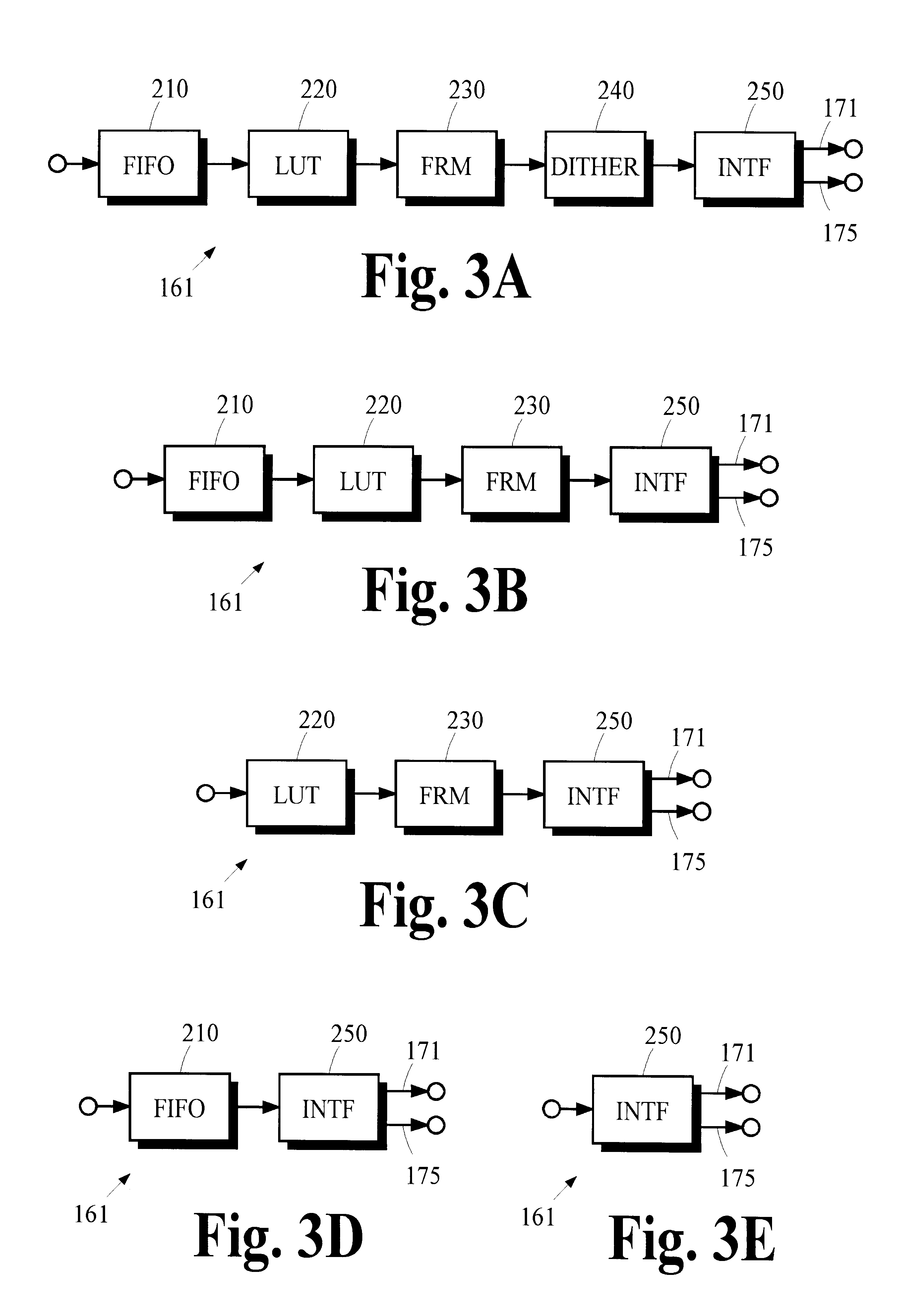Presenting independent images on multiple display devices from one set of control signals
- Summary
- Abstract
- Description
- Claims
- Application Information
AI Technical Summary
Benefits of technology
Problems solved by technology
Method used
Image
Examples
Embodiment Construction
A. Overview
1. General Apparatus
A display controller according to the present invention may be implemented in a number of ways and incorporated into a wide variety of systems and apparatuses including a personal computer system. FIG. 1 is a block diagram of computer system 10 that may incorporate a display controller according to the present invention. CPU 12 provides computing resources. I / O control 14 represents an interface to input / output device 15 such as a keyboard, mouse or printer. Storage control 16 represents an interface to storage device 17 that includes a storage medium such as magnetic tape or disk, or an optical medium. The storage medium may be used to record programs of instructions for operating systems, utilities and applications. Display control 18, which may incorporate various aspects of the present invention, provides an interface to display devices 19 and 20. RAM 13 is system random access memory (RAM). This memory should not be confused with any memory that m...
PUM
 Login to View More
Login to View More Abstract
Description
Claims
Application Information
 Login to View More
Login to View More - R&D
- Intellectual Property
- Life Sciences
- Materials
- Tech Scout
- Unparalleled Data Quality
- Higher Quality Content
- 60% Fewer Hallucinations
Browse by: Latest US Patents, China's latest patents, Technical Efficacy Thesaurus, Application Domain, Technology Topic, Popular Technical Reports.
© 2025 PatSnap. All rights reserved.Legal|Privacy policy|Modern Slavery Act Transparency Statement|Sitemap|About US| Contact US: help@patsnap.com



